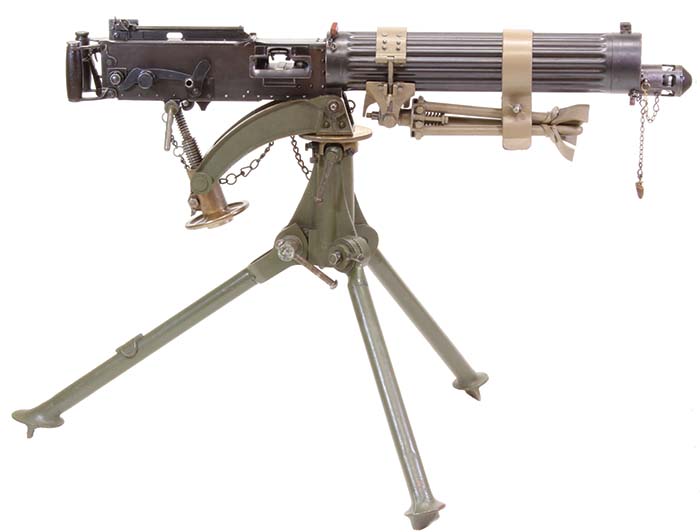The Mountings, Tripod, Auxiliary, .303 Machine Gun, Mark III” or Sangster mount, attached to the water jacket of the Vickers Mark I water-cooled machine gun.
By Robert G. Segel
One of the rarest and most sought after accessories for the Vickers water-cooled machine gun is the “Mountings, Tripod, Auxiliary, .303 Machine Gun, Marks I, II and III” – otherwise known vernacularly simply as the “Sangster Mount.”
The large 51 pound Mark IV tripod was the standard service mount for the Vickers machine gun and was the appropriate base for controlled aimed fire, either direct or indirect, from an entrenched position. However, by 1915 in World War I, it was recognized, and there emerged a perceived need, for a small auxiliary tripod that could be clamped directly to the water jacket for use in the quick moving forward attack as well as an emergency tripod to be deployed quickly when rapid redeployment from a position was necessitated by incoming enemy fire, to a new position that required the gun to be put into immediate action.
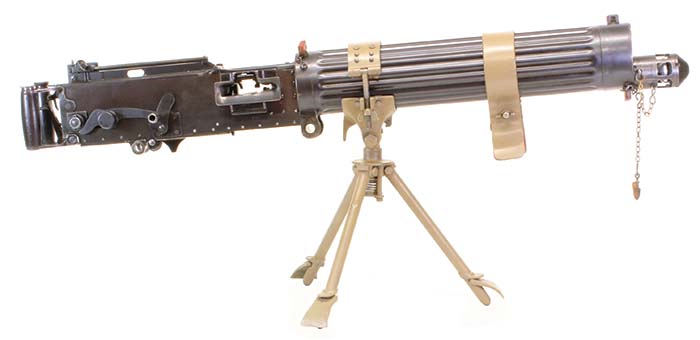
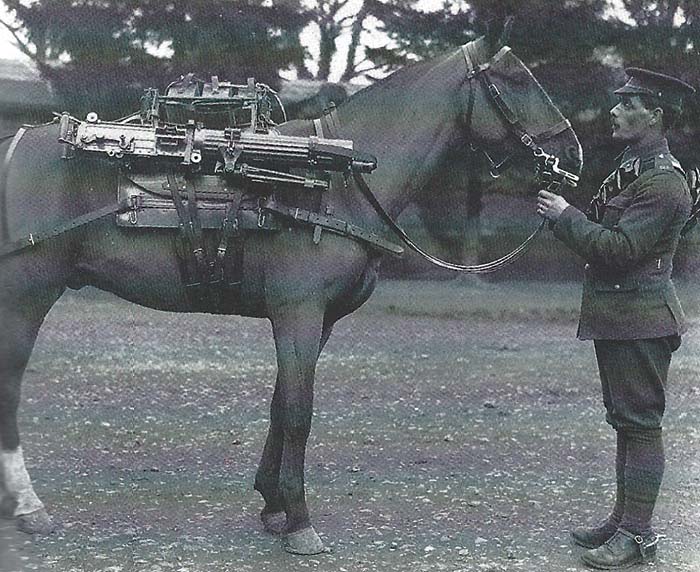
On April 20, 1915, Charles Thomas Brock Sangster, a well-known British engineer and industrialist in the bicycle industry, applied for a patent for just such an auxiliary tripod and a patent was granted on June 8, 1916 (Patent No. 100577).
The use of this auxiliary tripod is stated quite clearly in the British Handbook for the .303-In. Vickers Machine Gun, September 1918: “This auxiliary tripod mounting, which is not intended to replace the Mark IV tripod, is for use as an alternative to it, and will in future be issued on a scale of 1 per machine gun to cavalry and infantry units.”
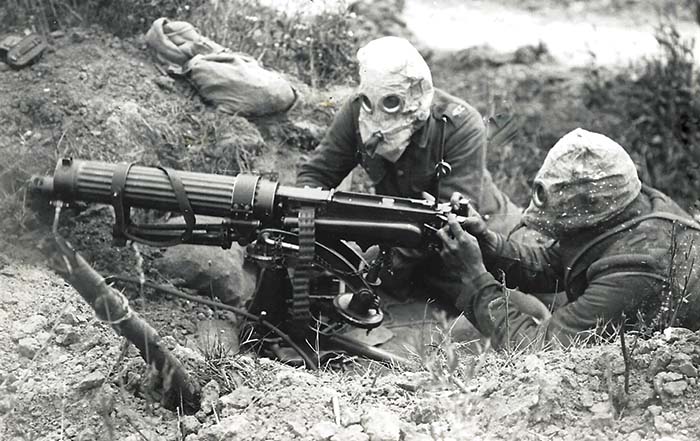
There were technically three Marks of the mount that ultimately saw service with the differences being slight design changes very early on and two variations of brackets to hold the legs when not in use. . The final, Mark III version with spring leg clamps was officially adopted on October 25, 1917. The Mark designation was not stamped or applied to the units.
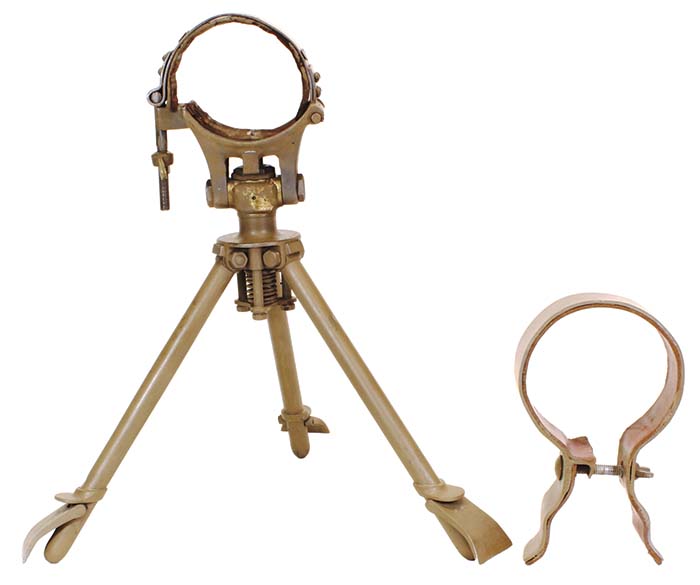
The “Sangster” mount actually consisted of two components: the main tripod and clamp assembly and the leg holding clamp bracket. On the Marks I and II, the forward leg holding bracket was essential to hold the legs forward in a horizontal positon. Freeing the legs from the forward holding bracket would allow the legs to drop and be deployed. The Mark III version, the most common used and deployed, used a piston arrangement to hold the legs horizontally thus a simplified forward leg holding bracket was employed. The Mark III was deployed by slightly spreading the three tripod legs, which depressed a piston on the tripod head, allowing the unit to rotate and drop down to a vertical position, which then allowed the legs to be fully splayed. When deployed, the mount allowed a full free 360 degree traverse and a 45 degree elevation.
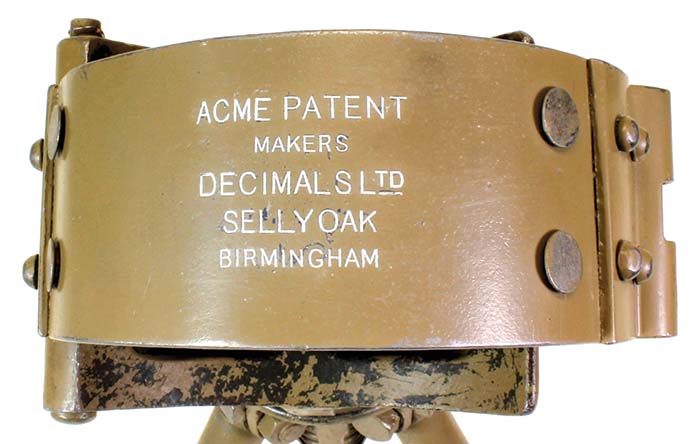
Again referring to the Handbook for the .303-In. Vickers Machine Gun, September 1918, the mounting consists of the following parts:
1) Three legs, each fitted at one end with a joint for attaching to the crosshead pivot, and at a short distance from the opposite end with a shoe which gives stability to the mounting when firing. The pivot receives the trunnion block to which the saddle of the rear gun band is connected by trunnion screws. The underside of the bracket is so formed that by the action of a spring plunger which passes through the center of the pivot, it admits of the legs being folded down in one direction, but held rigidly in the opposite direction.
A hinged clip – provided with a clamping screw and wing nut – with saddle, complete the rear gun band to which is secured a leather lining for gripping the gun.
2) The front gun band which is of steel (leather lined), is formed with two free ends (leather covered); these ends clip the legs of mounting when folded down. It is provided with a clamping screw and wing nut for securing it to the barrel casing of the gun in such a position that the legs of the mounted, when folded up, shall protrude about 1-inch beyond the spring clip.
3) Two leather straps are provided for transporting the gun with the mounting.
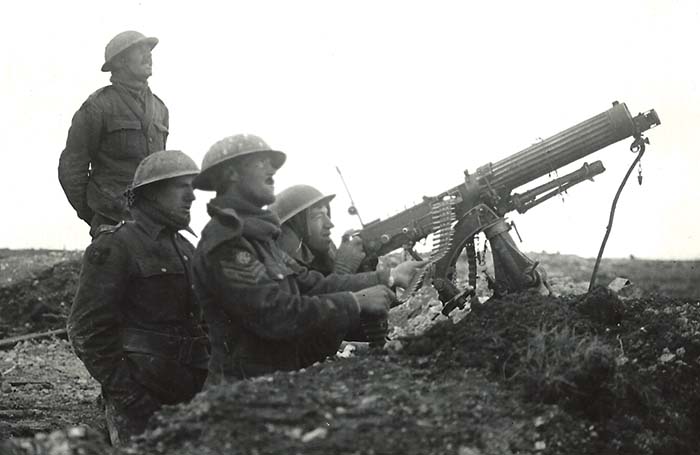
A number of auxiliary tripod front band mountings were issued to the Service that differed from the Number 3 description above and were known as the Mark I. These eliminated the leather straps and merely held the legs in the forward un-deployed position. Interchangeability of the front gun band Mark I among the different rear mounting Marks is not affected.
Warfare methods quickly changed and with the widespread issuance of Lewis guns in 1916, the Lewis was much better suited to be carried forward in infantry assault than the heavy and clumsy water-cooled Vickers. Though issued widely and generally well accepted, particularly in emergency situations, the bane of all foot soldiers is the amount of equipment they must carry and the weight imposed upon them. The 8 pound auxiliary mount was generally discarded to save weight as the need for emergency use was very rare amongst regular infantry. There are very few photographs actually taken in World War I that show the Sangster mount in use among the front line infantry either with the auxiliary mount deployed or just attached to the gun ready for use. However, cavalry units and members of the Motor Machine Gun Corps riding Clyno motorcycles with Mk IV tripods secured to sidecars used the auxiliary mount for rapid dismounting and quickly putting the gun into action. They were officially discontinued for use and declared obsolete in 1921 and scrapped. Few have survived making this a rare and important accessory for a Vickers in a collection.
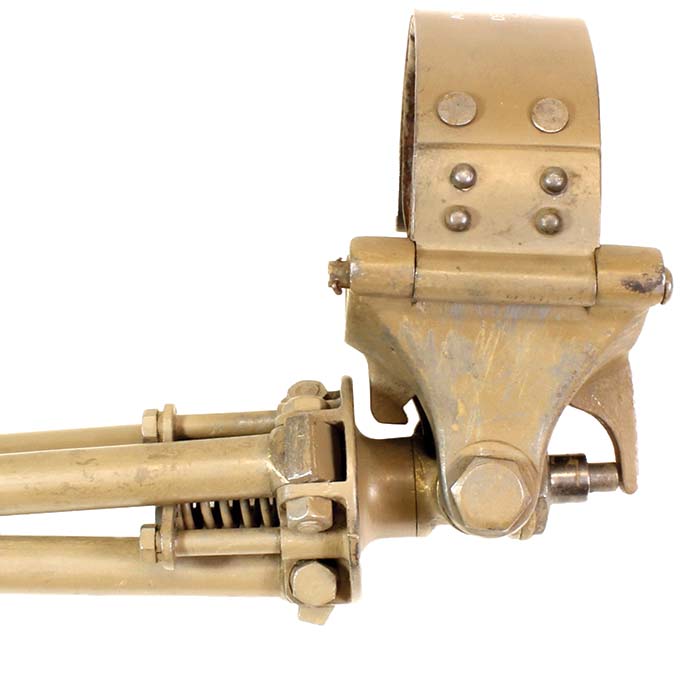
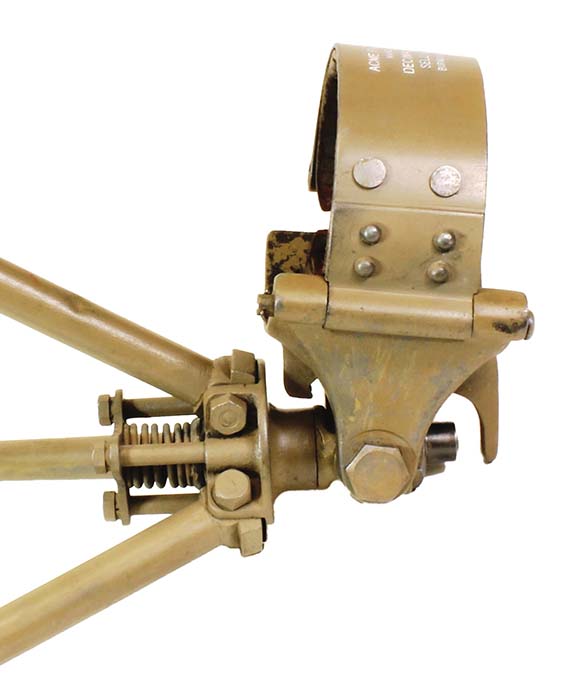
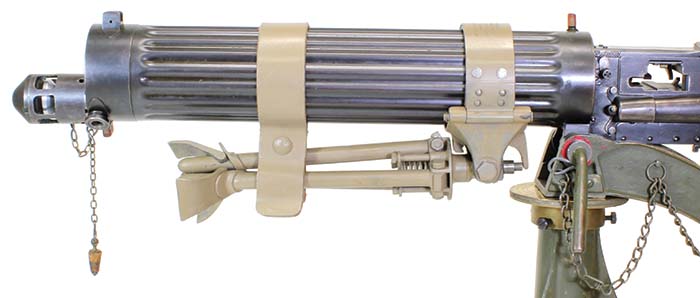
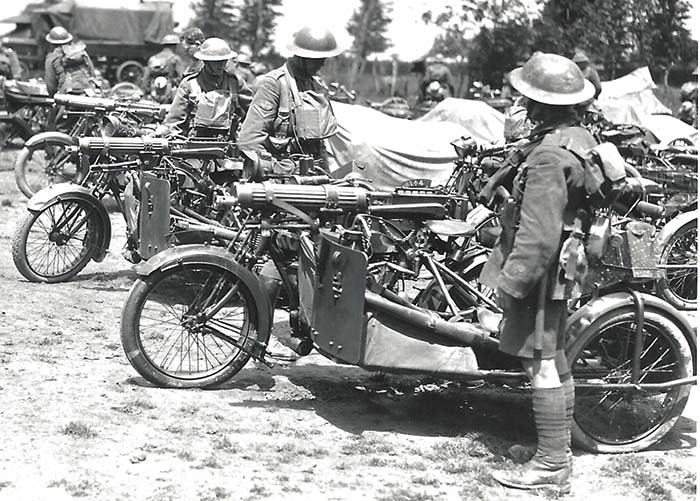
| This article first appeared in Small Arms Review V19N2 (March 2015) |



